The rise of non-invasive, at-home solutions for skincare has ushered in a new era of anti-aging products, and few have generated as much curiosity as Frownies and similar facial patches for wrinkles. With promises of smoother skin, reduced fine lines, and a more youthful appearance, these wrinkle patches have carved out a visible niche in the beauty and wellness market. But the question remains: do Frownies really work, or are they merely a modern iteration of age-old beauty myths? As consumers increasingly seek evidence-based skincare treatments, it becomes essential to investigate what the science actually says, how dermatologists weigh in, and what practical benefits—if any—these face patches for wrinkles truly offer.
You may also like: How to Choose Skin Care for Fine Lines: Evidence-Based Tips for Healthier, Younger-Looking Skin
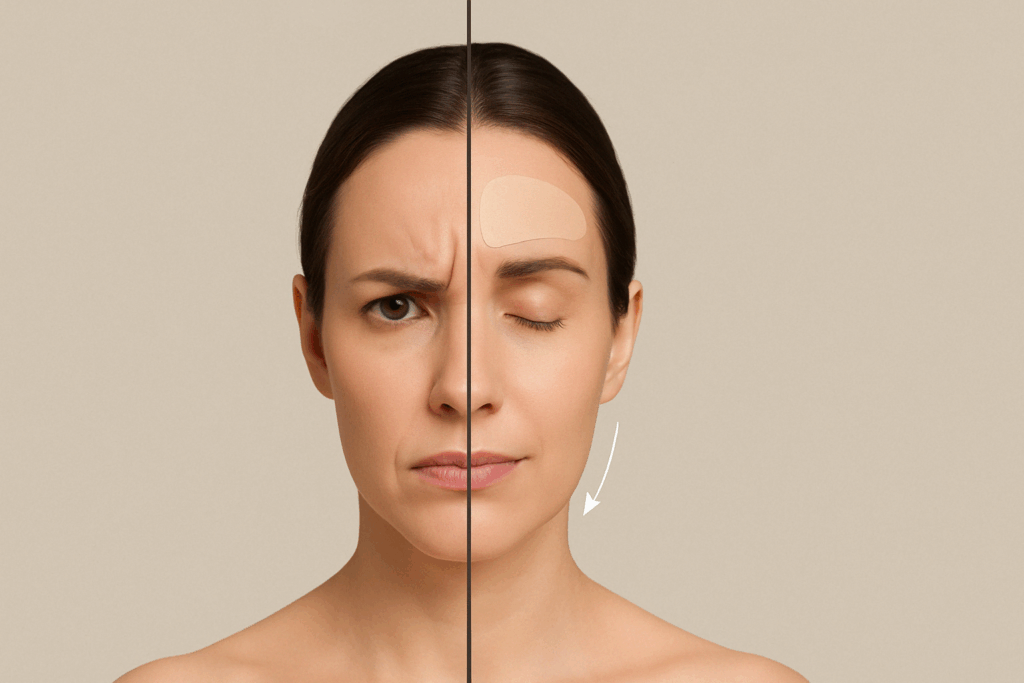
Understanding the Concept: How Face Patches for Wrinkles Are Supposed to Work
Face patches for wrinkles, also known as anti wrinkle skin patches or anti ageing patches, are typically adhesive strips made of natural materials or medical-grade silicone designed to be worn overnight or for several hours at a time. These patches, including Frownies and competing products like Wrinkles Schminkles, claim to immobilize facial muscles and smooth out skin tension during rest, theoretically allowing skin to recover and maintain a wrinkle-free state. By physically holding the skin taut, forehead wrinkle patches and frown line patches aim to prevent the repetitive micro-movements that contribute to expression lines.
The mechanism mirrors the logic behind Botox, which works by paralyzing underlying muscles to prevent creasing. However, while Botox penetrates the neuromuscular junction and lasts for months, wrinkle patches rely solely on surface-level tension. Botox patches, though still under clinical evaluation, also aim to deliver botulinum toxin through the skin—a starkly different approach from adhesive frownie patches. The question, then, is whether this superficial immobilization provides any long-term benefit or whether the results are merely temporary and cosmetic.
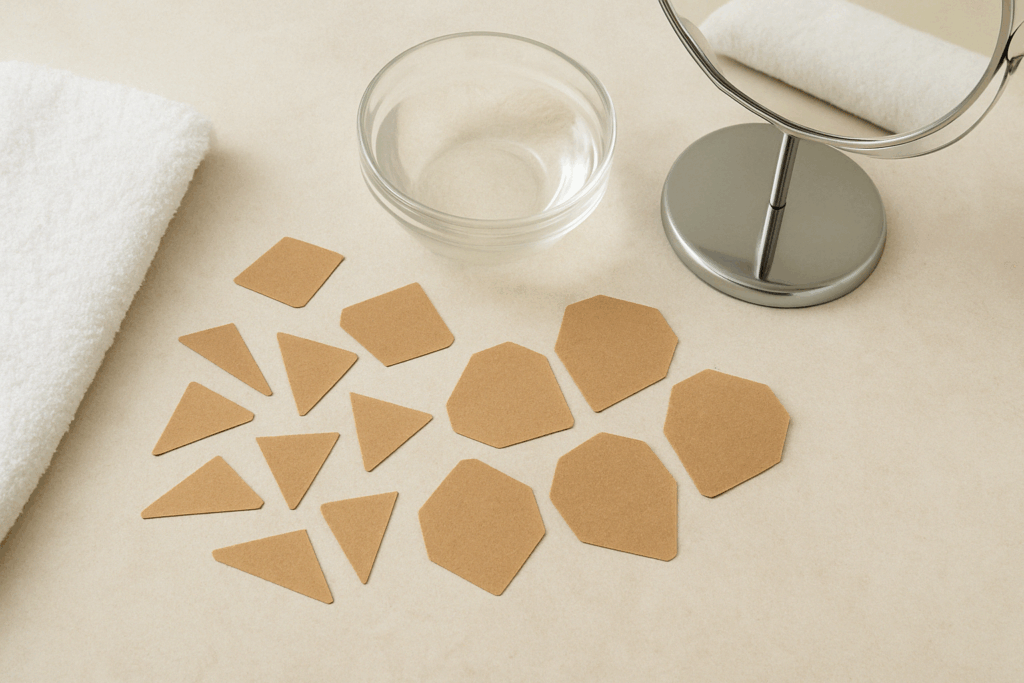
What Are Frownies Made Of?
The original Frownies, developed more than a century ago, are made from unbleached, natural kraft paper with a water-activated adhesive. This composition is intentionally simple to appeal to those wary of chemical-laden skincare products. Unlike silicone-based face strips for wrinkles, Frownies do not introduce any active skincare ingredients. Instead, their mechanism is entirely mechanical: they stiffen once moistened and dried against the skin, forming a rigid structure that restricts movement in targeted areas.
This makes them distinct from many modern anti wrinkle patches, which are often infused with ingredients like hyaluronic acid, peptides, or vitamin C. These additions aim to provide topical benefits while the patch sits on the skin. However, Frownies emphasize muscle training and wrinkle prevention through physical means rather than biochemical action. Understanding what Frownies are made of is crucial in evaluating their potential efficacy: they are not skincare in the traditional sense but rather a wearable skin exercise device.
The Evidence: Do Frownies Really Work?
When considering whether Frownies actually work, it’s important to distinguish between anecdotal user reports, dermatological opinion, and peer-reviewed scientific evidence. While many consumers report visible improvements after consistent use of Frownie patches, these claims are often based on short-term aesthetic changes—such as smoother skin after a night of wear. These effects are likely due to temporary skin compression and hydration retention, rather than structural changes in the skin itself.
Scientific studies directly evaluating Frownies remain scarce. There is currently limited peer-reviewed research confirming the long-term efficacy of face patches for wrinkles in reducing static lines or preventing dynamic wrinkles. Most available evidence is indirect, stemming from research on skin occlusion, facial muscle activity, and mechanical skin manipulation. While studies on silicone patches and medical dressings show benefits in scar healing and skin hydration, extrapolating these findings to wrinkle prevention is not straightforward. Consequently, the question “do Frownies really work?” remains partially unanswered, with the best-supported answer being: they may help temporarily, but there is little evidence of long-term anti-aging benefits.

Dermatologists’ Views on Forehead Wrinkle Patches and Frownie Patches
Dermatologists generally maintain a cautious stance when it comes to products like Frownies. Many acknowledge that forehead wrinkle patches and other anti wrinkle patches can offer short-term improvements in the skin’s appearance. The tautness they create may indeed reduce the visibility of fine lines temporarily, particularly when the patches are used consistently and correctly. However, experts also emphasize that these benefits are not equivalent to what can be achieved with injectables, lasers, or retinoid treatments.
One key concern among dermatologists is that wrinkle patches may give users a false sense of security, leading them to forgo clinically validated interventions. While frown line patches may reduce facial movement during sleep and thus potentially slow the development of expression lines, this passive strategy should not replace evidence-based skincare routines involving sunscreen, retinoids, and proper moisturization. Moreover, dermatologists often point out that individual skin type, elasticity, and depth of wrinkles can greatly influence how effective such products will be. Thus, while Frownies may work for some, they are far from a universal solution.
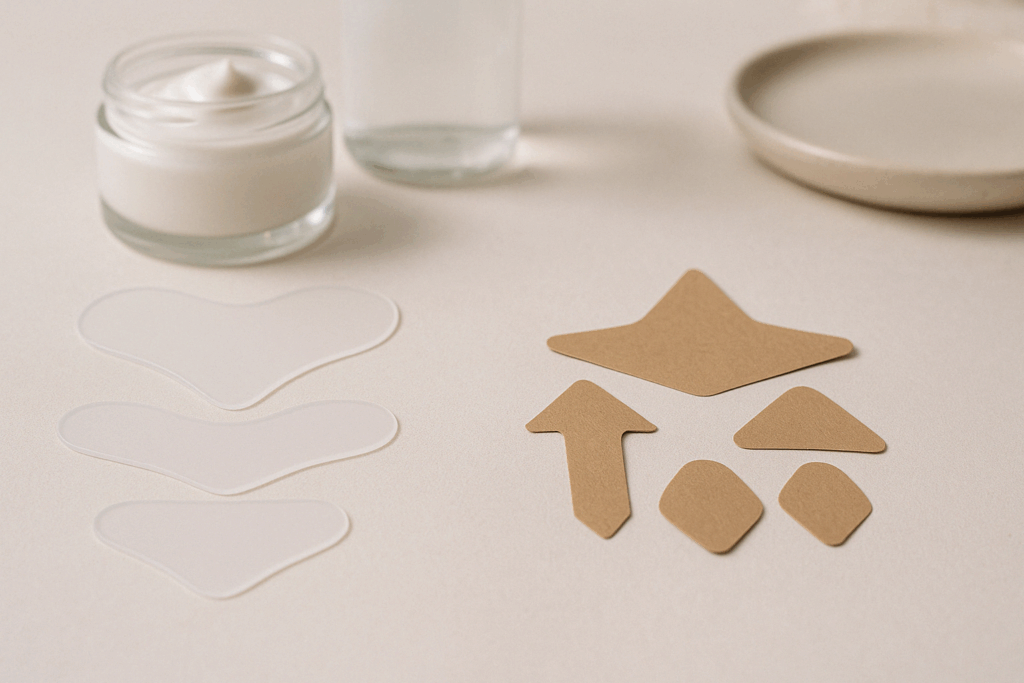
Comparing Options: Wrinkles Schminkles vs Frownies
In recent years, the market for wrinkle patches has expanded dramatically, leading to comparisons between products like Wrinkles Schminkles and Frownies. Wrinkles Schminkles are typically made from 100% medical-grade silicone and are designed to be reusable for several applications. In contrast, Frownies are single-use and rely solely on mechanical pressure without added ingredients. The silicone in Wrinkles Schminkles is thought to help improve skin texture and hydration, much like silicone sheeting used in dermatological scar treatments.
The choice between Wrinkles Schminkles vs Frownies often comes down to user preference and skincare goals. Those looking for hydration and skin smoothing may prefer silicone-based anti wrinkle skin patches, while those concerned about repetitive muscle movements might opt for the stiffer adhesive structure of Frownies. Additionally, users who prioritize ingredient-free, natural skincare may gravitate toward the simplicity of Frownies. Yet in both cases, consistency is key—neither product is likely to show results without regular and prolonged use.
Are Wrinkle Patches Just a Trend or a Useful Tool?
Given the marketing buzz and influencer endorsements, some might wonder if wrinkle patches are merely a passing skincare fad. But a closer look reveals that face patches for wrinkles, particularly when used strategically, may have a place in a well-rounded anti-aging regimen. They are especially appealing for individuals seeking non-invasive alternatives to Botox or fillers. For example, a forehead patch used overnight may help those who unconsciously frown in their sleep, thereby reducing the development of glabellar lines.
However, it is crucial not to overstate their impact. Unlike cosmetic injectables, wrinkle patches do not fundamentally alter muscle behavior or stimulate collagen production. Their benefits are primarily mechanical and temporary, best understood as adjunctive rather than primary treatments. For those willing to invest the time and consistency, anti ageing patches can serve as a gentle, skin-friendly approach to wrinkle minimization, particularly when combined with other dermatologist-recommended therapies.
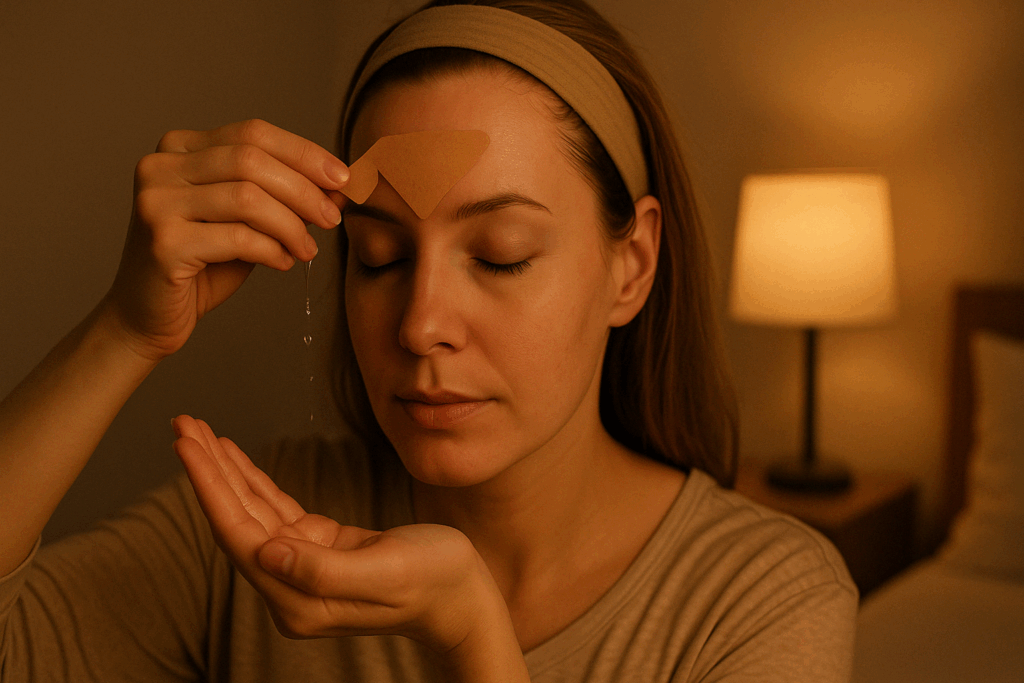
How to Use Frownies and Other Face Strips for Wrinkles Effectively
Correct usage of Frownies and similar face strips for wrinkles is essential for achieving visible results. The process typically involves activating the adhesive with water and then firmly pressing the patch onto clean, dry skin. It’s recommended to leave the patch on for several hours, ideally overnight, to maximize the immobilization effect. For first-time users, it may take several nights of consistent application before any improvement is noticeable.
It’s important to note that these patches should not be applied over moisturizers or oils, as this can interfere with adhesion. Moreover, placement matters: targeting areas prone to repetitive movement—such as the forehead, between the brows, or around the mouth—can yield better cosmetic outcomes. Dermatologists often emphasize that these patches should supplement, not replace, a complete skincare regimen. For best results, combining wrinkle patches with ingredients like retinol, vitamin C, or peptides can support skin health more comprehensively.
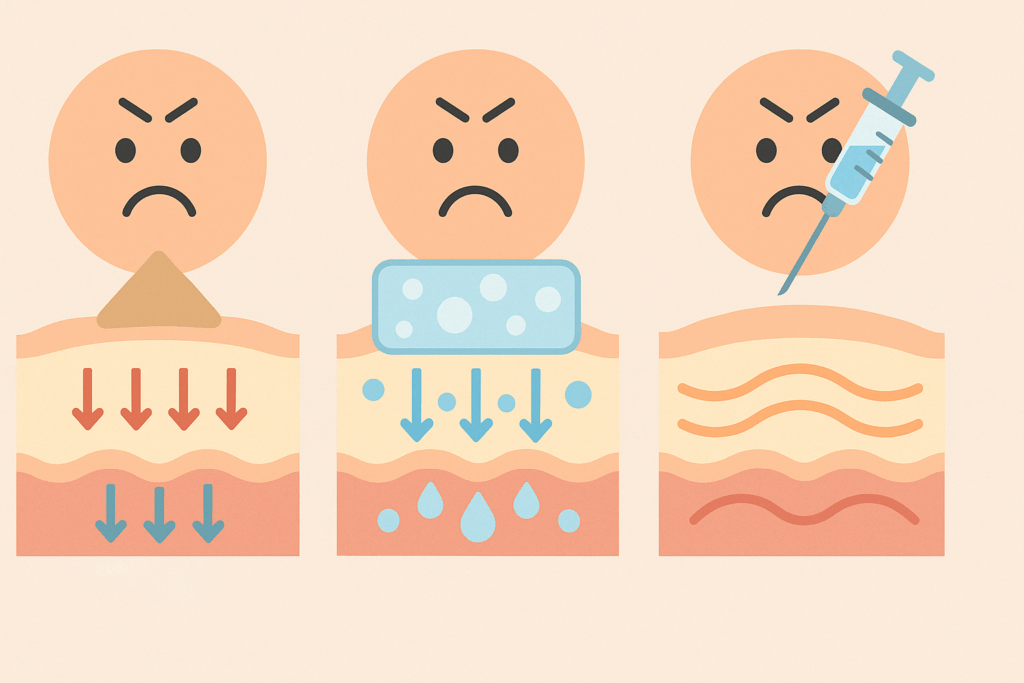
Do Frownies Actually Work for Preventing Deep Wrinkles?
One of the most debated questions is whether Frownies actually work to prevent deep wrinkles from forming over time. Theoretically, by limiting the movement of facial muscles during periods of rest, Frownies could reduce the mechanical stress that leads to wrinkle formation. This is similar in principle to the way Botox prevents dynamic wrinkles from becoming static. However, without the ability to affect muscle activity on a neurochemical level, the effect of Frownies is significantly milder.
Long-term prevention may be possible to some extent, particularly for individuals who are proactive about starting early and using the patches consistently. Yet there is no clinical consensus or robust longitudinal data confirming that regular use of Frownies prevents deep wrinkles. Most dermatologists agree that wrinkle patches are best viewed as supplementary tools rather than substitutes for proven dermatologic interventions. Still, for those averse to more invasive options, the gentle support of Frownies may provide a sense of control and empowerment in managing early signs of aging.
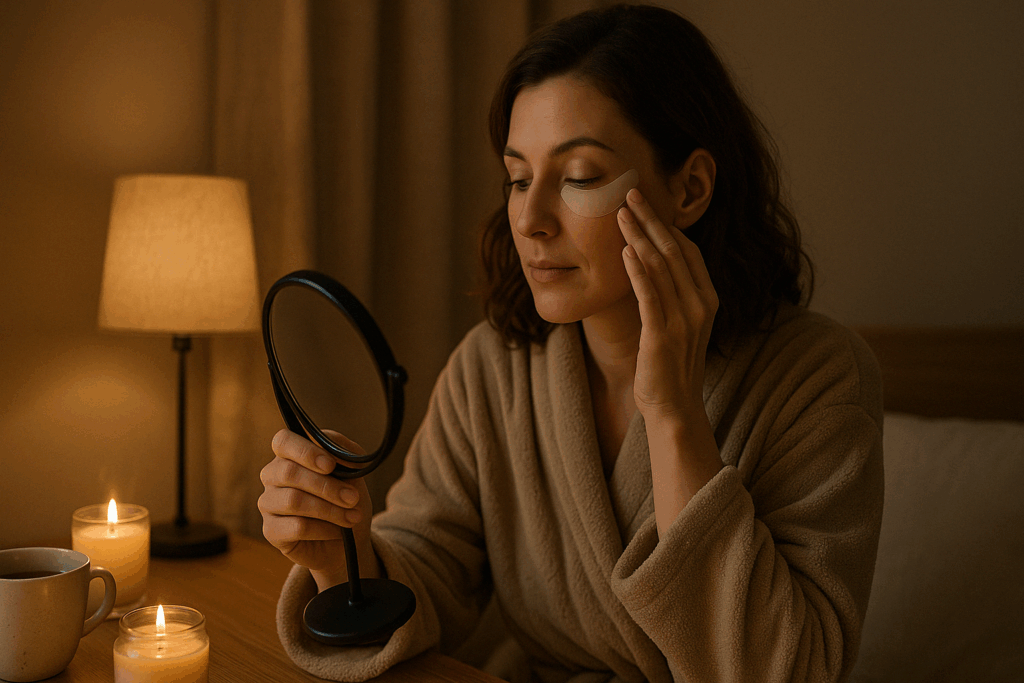
The Psychology of Skincare: Rituals, Consistency, and Perceived Results
An often-overlooked aspect of using wrinkle patches is the psychological benefit they provide. Establishing a consistent skincare ritual can have a profound impact on one’s mental well-being, offering structure, mindfulness, and a sense of self-care. Face patches for wrinkles, in this sense, may function not only as cosmetic tools but also as therapeutic habits. The visible act of applying a forehead patch before bed can signal the transition into rest and self-nurturing, reinforcing healthy routines that extend beyond skin health.
Placebo effects may also play a role in how users perceive the effectiveness of anti wrinkle patches. When individuals invest time and effort into a routine, they are more likely to perceive positive results, especially if those routines are paired with other beneficial behaviors such as hydration, sleep, and sun protection. In this way, even modest improvements can feel more significant. This does not mean the patches are ineffective, but rather that their full impact may be partially psychological as well as physical.
Navigating the Marketing Hype: Separating Promise from Proof
As with many beauty products, the marketing surrounding wrinkle patches can be aspirational and sometimes misleading. Claims of “miraculous wrinkle reversal” or “overnight transformation” are rarely substantiated by rigorous science. Consumers must learn to critically evaluate product claims, distinguishing between temporary cosmetic smoothing and long-term structural improvements in the skin. Understanding the limits of what forehead wrinkle patches can achieve is essential to setting realistic expectations.
When evaluating products like Frownie patches, it’s helpful to look for brands that offer transparency regarding ingredients, mechanisms of action, and recommended use. Testimonials and before-and-after photos can be useful, but they should never substitute for evidence from controlled studies or expert guidance. Dermatologists often remind patients that while these patches may complement an anti-aging routine, they cannot replace the foundational pillars of skincare: sun protection, moisture retention, and cellular renewal.
Frequently Asked Questions: Frownies and Wrinkle Patches for Aging Skin
1. Can facial patches for wrinkles help reduce nighttime facial tension or muscle clenching?
Yes, facial patches for wrinkles may offer subtle benefits in minimizing unconscious muscle tension during sleep. While they are primarily designed for skin smoothing, some users report a reduction in nocturnal clenching of facial muscles, particularly around the brow and forehead. Forehead wrinkle patches, for instance, create a firm barrier that discourages furrowing while asleep. Though not a substitute for stress management or sleep hygiene, these wrinkle patches may provide a gentle behavioral cue that reduces repeated micro-movements over time. For individuals with tension-related frown lines, anti wrinkle patches could complement mindfulness-based stress reduction strategies.
2. Do frownies really work differently for people with dry versus oily skin types?
Skin type can indeed influence how well Frownies and other face patches for wrinkles adhere and perform. Individuals with oily skin might find that patches do not stick as firmly, particularly in humid environments or after applying skincare products. In contrast, those with dry or combination skin may benefit from the increased hydration retention that these face strips for wrinkles encourage. While Frownie patches do not contain active hydrating ingredients, their occlusive nature can help trap moisture—especially when used in conjunction with a proper nighttime routine. Users with oily skin may need to cleanse more thoroughly beforehand or explore forehead patches designed with enhanced adhesives.
3. Are there any long-term studies that evaluate whether Frownies actually work over several years?
At present, there are no large-scale, peer-reviewed longitudinal studies tracking the long-term efficacy of Frownie patches across multiple years. Most of the current insights come from anecdotal user reports or short-term observational studies on face patches for wrinkles. However, dermatologists suggest that wrinkle prevention depends heavily on genetics, sun exposure, and consistency of care rather than any single product. Users who claim that Frownies actually work often pair them with a comprehensive anti-aging strategy, including sunscreen and retinoids. While Frownie patches may assist in muscle retraining over time, their cumulative benefit likely varies by age, lifestyle, and skin resilience.
4. What are some of the most common mistakes people make when using anti wrinkle patches?
Improper application and unrealistic expectations are two of the most common issues associated with anti wrinkle skin patches. Users sometimes apply the patches over moisturized skin, which compromises adhesion and effectiveness. Others may expect forehead patches to mimic the results of Botox, leading to disappointment. Another mistake is inconsistent use—occasional wear will likely yield minimal results. For optimal effect, wrinkle patches should be part of a regular routine and applied to clean, dry skin. Being mindful of facial movements throughout the day can also help reinforce the muscle training benefits that face patches offer.
5. How do Botox patches compare to Frownies in terms of delivery and effectiveness?
Botox patches, which are still undergoing clinical trials, differ significantly from Frownies in both mechanism and proposed benefit. Unlike Frownie patches, which are non-invasive and surface-based, Botox patches aim to deliver botulinum toxin transdermally through micro-needle or nano-carrier technologies. If successful, these patches may offer similar effects to injectable Botox, such as reduced muscle activity. However, forehead wrinkle patches like Frownies do not contain any active agents—they work mechanically rather than pharmacologically. While botox patches remain experimental, Frownies continue to be used as a simpler, drug-free option in the anti wrinkle patches category.
6. Can face patches for wrinkles offer any benefits for people undergoing facial retraining therapy or recovering from Botox?
Interestingly, face patches for wrinkles may support facial retraining efforts or serve as adjuncts during Botox aftercare. Some rehabilitation professionals use wrinkle patches to help patients become more aware of unconscious muscle movements following neurological events. Likewise, after Botox injections begin to wear off, using forehead wrinkle patches may help prolong the results by limiting repetitive expression. These applications go beyond cosmetic goals and delve into neuromuscular re-education. While anti wrinkle skin patches were not originally intended for therapeutic use, their utility in muscle awareness training is an emerging area of interest.
7. Are there unique benefits to using wrinkle patches while traveling or during high-stress periods?
Yes, wrinkle patches such as Frownie patches can be especially helpful during travel or high-stress periods. Air travel and stress are both associated with increased facial tension and dehydration—two contributors to accelerated wrinkle formation. Using anti ageing patches during flights or overnight stays can help preserve skin hydration and reduce expression-induced creasing. Forehead patches serve as a subtle physical barrier, encouraging the face to remain relaxed during sleep even in unfamiliar or uncomfortable environments. Including face patches in a travel skincare kit may provide both cosmetic and psychological comfort.
8. How do materials used in Wrinkles Schminkles vs Frownies affect user experience and outcomes?
When comparing Wrinkles Schminkles vs Frownies, the materials used lead to distinctly different user experiences. Wrinkles Schminkles are made of medical-grade silicone, offering a flexible and reusable option that enhances moisture retention and skin plumping. In contrast, Frownies are composed of unbleached kraft paper with a water-activated adhesive, making them more rigid and disposable. Some users report that silicone-based wrinkle patches feel more comfortable and better suited for sensitive skin. Others prefer the stiffness of Frownie patches for deeper facial immobilization. Ultimately, each forehead patch offers unique tactile feedback and varies in suitability depending on individual skincare goals.
9. What lifestyle factors influence how well anti wrinkle skin patches work?
Numerous lifestyle factors can impact the performance of anti wrinkle skin patches. Sleep posture, for example, plays a significant role—those who sleep on their stomach or side often develop asymmetrical lines that wrinkle patches may help correct. Hydration levels, stress management, and dietary habits also affect skin elasticity, which in turn influences how wrinkle patches adhere and perform. Regular exercise and circulation-boosting practices can support collagen production, indirectly enhancing the visible effects of face patches. Inconsistent routines or neglecting UV protection may undermine the benefits of even the best forehead patch.
10. How might future innovations expand the role of face strips for wrinkles in skin care?
The future of face strips for wrinkles is likely to blend skincare science with wearable technology. Researchers are exploring biofeedback patches that not only immobilize skin but also track facial muscle activity, helping users adjust their expressions in real time. Some prototypes involve patches embedded with microcurrents or nanofibers that stimulate collagen synthesis while maintaining the wrinkle-smoothing effect. Others are investigating biodegradable wrinkle patches made from sustainable materials for eco-conscious consumers. As technology evolves, anti wrinkle patches may transition from passive skincare aids to dynamic tools for skin monitoring, behavioral training, and active treatment delivery.
Final Thoughts: Should You Try Anti Wrinkle Patches or Stick with Traditional Skincare?
Ultimately, the decision to incorporate anti wrinkle skin patches into your skincare routine depends on your goals, preferences, and tolerance for different approaches. For those seeking a non-invasive, gentle option to reduce expression lines, products like Frownies can provide modest yet noticeable results—particularly when used regularly and in conjunction with evidence-based skincare. Whether you’re curious about what Frownies are made of or comparing forehead patches across brands, the key lies in setting realistic expectations and approaching these tools as part of a broader wellness strategy.
So, do Frownies really work? The answer is nuanced. They offer short-term skin smoothing, may aid in muscle retraining, and contribute to a psychologically satisfying skincare ritual. However, their limitations must be acknowledged—they are not miracle products, nor do they replace dermatological treatments. As with many things in skincare, success lies in consistency, education, and choosing products that align with both your needs and values. When approached with informed intent, facial patches for wrinkles can be a valuable—if modest—addition to the evolving science of healthy aging.
Was this article helpful? Don’t let it stop with you. Share it right now with someone who needs to see it—whether it’s a friend, a colleague, or your whole network. And if staying ahead on this topic matters to you, subscribe to this publication for the most up-to-date information. You’ll get the latest insights delivered straight to you—no searching, no missing out.
Further Reading:
Frownies Review: We Tried Face Taping to Reduce Wrinkles
Wrinkle Patches Aren’t All They’re Cracked Up to Be
Do Wrinkle Patches Really Work? We Asked The Expert
Disclaimer
The information contained in this article is provided for general informational purposes only and is not intended to serve as medical, legal, or professional advice. While Health11News strives to present accurate, up-to-date, and reliable content, no warranty or guarantee, expressed or implied, is made regarding the completeness, accuracy, or adequacy of the information provided. Readers are strongly advised to seek the guidance of a qualified healthcare provider or other relevant professionals before acting on any information contained in this article. Health11News, its authors, editors, and contributors expressly disclaim any liability for any damages, losses, or consequences arising directly or indirectly from the use, interpretation, or reliance on any information presented herein. The views and opinions expressed in this article are those of the author(s) and do not necessarily reflect the official policies or positions of Health11News.